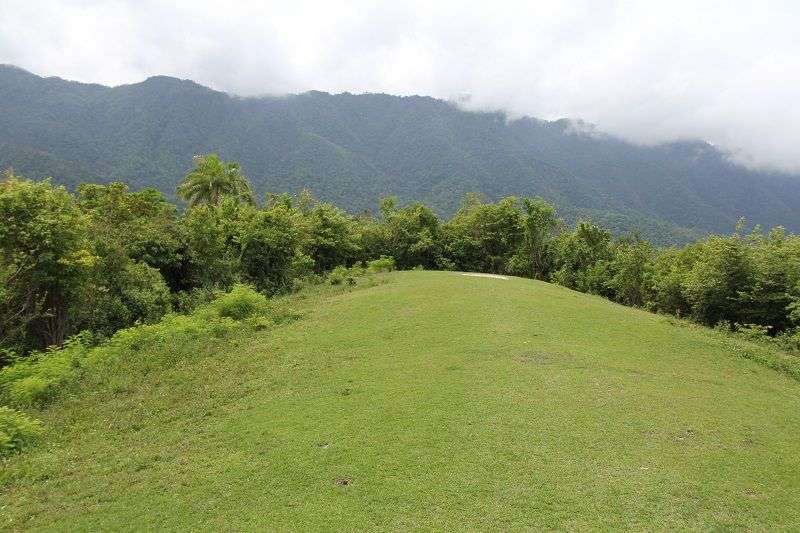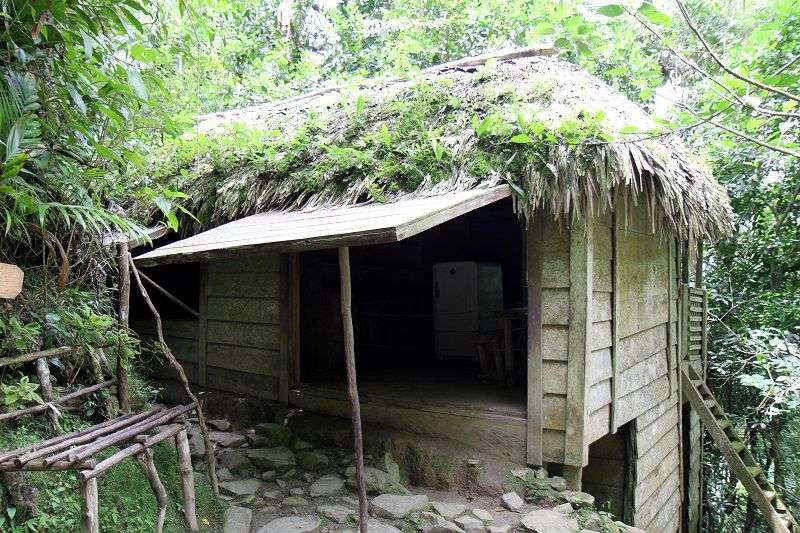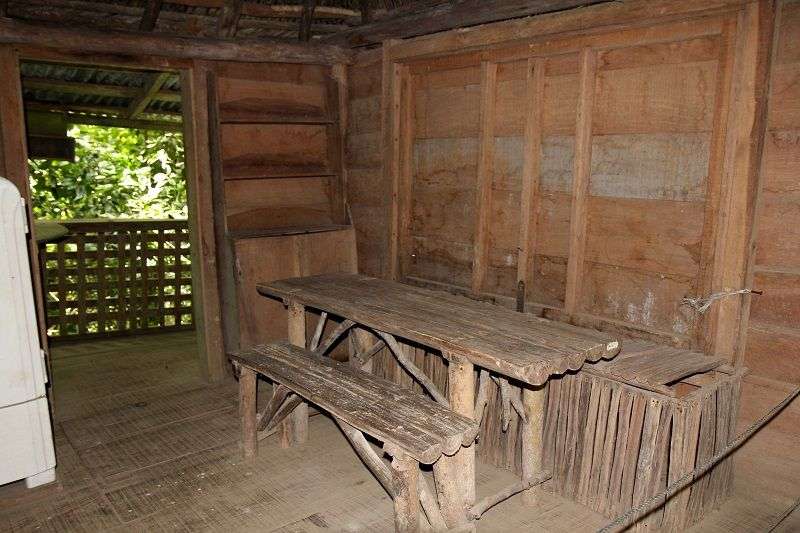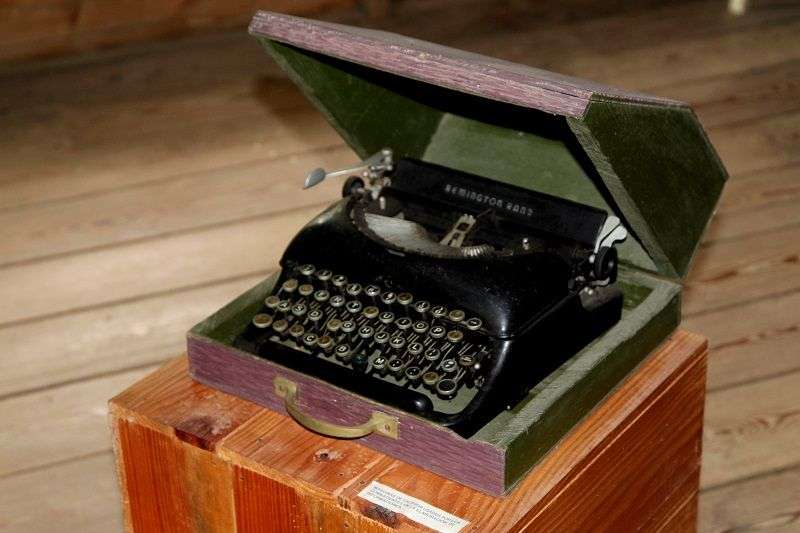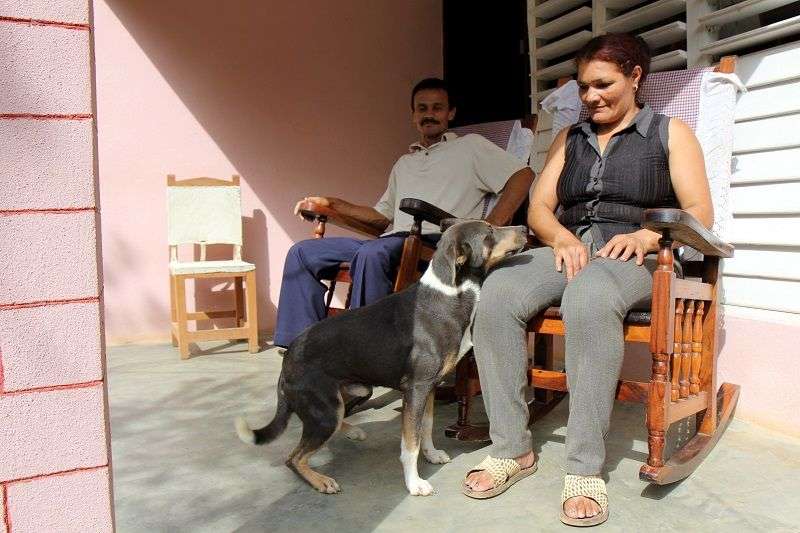Biran
Fidel Castro was born on his father’s sugar plantation near the town of Biran in eastern Cuba on Aug. 13, 1926.
His father, Angel Castro, was an immigrant from Spain. His mother, Lina, was a former maid.
They had seven children: Four sisters, Angelita, Juanita, Emma and Augustina; and three sons, Ramon, Fidel and Raul.
Fidel Castro grew up around poor immigrants from Haiti, Barbados and other Caribbean nations. They worked on his father’s plantation, which has been restored and is open to tourists.
Castro attended Mixed Rural School No. 15 on the grounds of the plantation. On a clear summer morning, historian Alietty Castro walked into the one-room school and pointed out Fidel Castro’s seat in the classroom.
“He studied here when he was very small,” said Castro, who is not related to the former Cuban leader. “Ever since he was very little, he was quite intelligent, very restless, but also very astute. He was a person who from an early age identified with the children in the area.”
The parents of most of those children were poor and worked on the sugar plantation. Living and studying among the poor likely helped develop Castro’s interest in social justice, the historian said.
1. Fidel Castro is a controversial figure with countless critics, but he has supporters in his birthplace of Biran. Lazaro Castro said history will remember him “as the great man that he was, as the great human being, the great statesman, the great friend, the great revolutionary.” Photo: Tracey Eaton
Fidel Castro is a controversial figure with countless critics, but he has supporters in his birthplace of Biran. Lazaro Castro said history will remember him “as the great man that he was, as the great human being, the great statesman, the great friend, the great revolutionary.” Photo: Tracey Eaton
2. Fidel Castro was the third of seven children. All seven slept in this crib after their birth. Photo: Tracey Eaton
Fidel Castro was the third of seven children. All seven slept in this crib after their birth. Photo: Tracey Eaton
3. Fidel Castro attended the school on his father’s plantation from four to six years of age. Then his family sent him to a private school in Santiago de Cuba, Cuba’s second largest city. He was “quite cheerful, quite happy, but he was mischievous. He liked to get into trouble,” historian Alietty Castro said. Photo: Tracey Eaton
Fidel Castro attended the school on his father’s plantation from four to six years of age. Then his family sent him to a private school in Santiago de Cuba, Cuba’s second largest city. He was “quite cheerful, quite happy, but he was mischievous. He liked to get into trouble,” historian Alietty Castro said. Photo: Tracey Eaton
4. Fidel Castro’s striped underwear was on display on the shelves of a wooden armoire at the plantation. As a teen-ager, Castro excelled at baseball, basketball and hunting. Photo: Tracey Eaton
Fidel Castro’s striped underwear was on display on the shelves of a wooden armoire at the plantation. As a teen-ager, Castro excelled at baseball, basketball and hunting. Photo: Tracey Eaton
5. While at the plantation, Fidel Castro sometimes played pool with his brother, Raul Castro, now president of Cuba. The younger brother was said to be the better pool player. The plantation also featured a bar called La Paloma, which was stocked with more than 160 different kinds of drinks and liquors. Photo: Tracey Eaton
While at the plantation, Fidel Castro sometimes played pool with his brother, Raul Castro, now president of Cuba. The younger brother was said to be the better pool player. The plantation also featured a bar called La Paloma, which was stocked with more than 160 different kinds of drinks and liquors. Photo: Tracey Eaton
6. Fidel Castro wrote of his time in Biran: “I lived in almost complete freedom, without laws and without any great impediments of any kind – always outside, playing, running, making mischief. My parents were very busy, engaged in agriculture and trade, and didn’t spend their days watching us, or making us mind our manners, and there were very few things we weren’t allowed to do.” Photo: Tracey Eaton
Fidel Castro wrote of his time in Biran: “I lived in almost complete freedom, without laws and without any great impediments of any kind – always outside, playing, running, making mischief. My parents were very busy, engaged in agriculture and trade, and didn’t spend their days watching us, or making us mind our manners, and there were very few things we weren’t allowed to do.” Photo: Tracey Eaton
7. The plantation had mail and telegraph services. Reading Stove Works, of Reading, Pa., manufactured the old mailbox, which hangs from the front of one of the buildings. Photo: Tracey Eaton
The plantation had mail and telegraph services. Reading Stove Works, of Reading, Pa., manufactured the old mailbox, which hangs from the front of one of the buildings. Photo: Tracey Eaton
8. Knick-knacks and mementos are found throughout the plantation, everything from this Old Spice shaving mug to a machete that Fidel Castro used in the 1970 sugar harvest. Other items include: A wooden box where Castro kept his coveted cigars; boots he wore on trips to Moscow; and a baseball glove used in a 1959 baseball game while leading a team called “The Bearded Ones.” Photo: Tracey Eaton
Knick-knacks and mementos are found throughout the plantation, everything from this Old Spice shaving mug to a machete that Fidel Castro used in the 1970 sugar harvest. Other items include: A wooden box where Castro kept his coveted cigars; boots he wore on trips to Moscow; and a baseball glove used in a 1959 baseball game while leading a team called “The Bearded Ones.” Photo: Tracey Eaton
9. This carob tree is one many huge trees on the grounds of the plantation. It is more than 100 years old. Photo: Tracey Eaton
This carob tree is one many huge trees on the grounds of the plantation. It is more than 100 years old. Photo: Tracey Eaton
10. Fidel Castro’s father first started building a home at the plantation in 1915. He finished it in 1917 and his children were born there. In 1947, he built a larger house. It burned to the ground in 1954 after he left a left a lit cigar in a bedroom, historian Alietty Castro said. His wife, Lina, hoped he would rebuild the home, but that didn’t happen for many years. Workers didn’t start on the project until the late 1970s with the help of Fidel Castro’s confidante Celia Sanchez. The home was unveiled in the 1980s. It is now being restored once again and is off limits to visitors. Photo: Tracey Eaton
Fidel Castro’s father first started building a home at the plantation in 1915. He finished it in 1917 and his children were born there.
In 1947, he built a larger house. It burned to the ground in 1954 after he left a left a lit cigar in a bedroom, historian Alietty Castro said.
His wife, Lina, hoped he would rebuild the home, but that didn’t happen for many years. Workers didn’t start on the project until the late 1970s with the help of Fidel Castro’s confidante Celia Sanchez. The home was unveiled in the 1980s. It is now being restored once again and is off limits to visitors. Photo: Tracey Eaton
11. Fidel Castro visited his old school in Biran on Sept. 23, 2003 – 100 years after the birth of his mother. A photo hanging on the wall of the school shows him sitting in the front row and talking to visiting students. Photo: Tracey Eaton
Fidel Castro visited his old school in Biran on Sept. 23, 2003 – 100 years after the birth of his mother. A photo hanging on the wall of the school shows him sitting in the front row and talking to visiting students. Photo: Tracey Eaton
12. These photos are of Fidel Castro’s parents. Times were tense during the Cuban revolution. Lina often prayed “to ask for the lives of the children she had in the war and she didn’t know what their fate would be,” historian Alietty Castro said. She turned one room at the plantation into a religious sanctuary of sorts, and visitors are not allowed to take pictures there. Raul Castro stopped by the house in 1958 to comfort his mother and to give her something for protection: A San Cristobal submachine gun. Photo: Tracey Eaton
These photos are of Fidel Castro’s parents. Times were tense during the Cuban revolution. Lina often prayed “to ask for the lives of the children she had in the war and she didn’t know what their fate would be,” historian Alietty Castro said. She turned one room at the plantation into a religious sanctuary of sorts, and visitors are not allowed to take pictures there. Raul Castro stopped by the house in 1958 to comfort his mother and to give her something for protection: A San Cristobal submachine gun. Photo: Tracey Eaton
13. Fidel Castro’s parents are buried at the plantation. His father slipped in the bathroom and suffered a hernia on Oct. 20, 1956. He was taken to a hospital about five miles away, but died the next day at the age of 81. His wife died on Aug. 23, 1963. Photo: Tracey Eaton
Fidel Castro’s parents are buried at the plantation. His father slipped in the bathroom and suffered a hernia on Oct. 20, 1956. He was taken to a hospital about five miles away, but died the next day at the age of 81. His wife died on Aug. 23, 1963. Photo: Tracey Eaton
La Plata
Fidel Castro’s headquarters during the final months of the Cuban Revolution was a simple two-room shelter hidden in the Sierra Maestra, a rugged stretch of peaks along Cuba’s southern coast.
Castro and his rebel forces were battling U.S.-backed Cuban leader Fulgencio Bastista and his 10,000 troops.
In 1958, Batista launched his most ambitious military offensive of the war. It was called Operation FF, which stood for Fase Final (Final Phase) or, alternately, Fin de Fidel (the End of Fidel).
Castro and about three dozen other rebels fled into the densely forested Sierra Maestra to escape Operation FF.
Castro’s confidant, Celia Sanchez, designed the rebel headquarters, which was built into a hillside and under a canopy of trees that shielded it from government planes.
The headquarters was known as La Comandancia de la Plata. Government forces never discovered it, Operation FF failed and Castro declared victory on Jan. 1, 1959.
The command post was later declared a national monument and workers restored it, along with 15 other wooden huts in the area.
For years, visitors could go to La Plata by invitation only, but the landmark is now open to tourists.
To get there, tourists must travel along Cuba’s steepest road, with inclines of up to 40 degrees. They pass through a village called Santo Domingo, then to El Alto de Naranjo, another 700 meters (2,300 feet) in elevation. They must go by foot or mule the final three kilometers (1.9 miles) to La Plata.
1. This was the first control point on the path toward Fidel Castro’s command post. During the revolution, rebels passed messages from here to Castro’s headquarters while determining whether a visitor could go past. The structure was also used as a medical post. “On some visits that Che Guevara made to the command post, he sometimes extracted molars. They didn’t have anesthesia,” guide Osmani Diaz said. Photo: Tracey Eaton
This was the first control point on the path toward Fidel Castro’s command post. During the revolution, rebels passed messages from here to Castro’s headquarters while determining whether a visitor could go past. The structure was also used as a medical post.
“On some visits that Che Guevara made to the command post, he sometimes extracted molars. They didn’t have anesthesia,” guide Osmani Diaz said. Photo: Tracey Eaton
2. This sign points the way to Fidel Castro’s former command headquaters. Castro “was a good leader and a good example for others,” said Osmani Diaz, 43, who has worked as a guide in the Sierra Maestra for 22 years. “He gave us hope. Photo: Tracey Eaton
This sign points the way to Fidel Castro’s former command headquaters. Castro “was a good leader and a good example for others,” said Osmani Diaz, 43, who has worked as a guide in the Sierra Maestra for 22 years. “He gave us hope. Photo: Tracey Eaton
3. During the revolution, Fidel Castro met with a visiting journalist on this grassy spot. They spoke in the home of rebel supporter Aurelio Medina. Castro suspected the journalist was a spy. So, as the story goes, Castro ordered that Medina’s home be removed and a replica built a few kilometers away. Some days later, government planes destroyed the replica, which confirmed the journalist was spying, guide Osmani Diaz said. Photo: Tracey Eaton
During the revolution, Fidel Castro met with a visiting journalist on this grassy spot. They spoke in the home of rebel supporter Aurelio Medina. Castro suspected the journalist was a spy. So, as the story goes, Castro ordered that Medina’s home be removed and a replica built a few kilometers away. Some days later, government planes destroyed the replica, which confirmed the journalist was spying, guide Osmani Diaz said. Photo: Tracey Eaton
4. A rebel fighter named Jeonas Rodriguez, 21, was injured in Santo Domingo and brought to La Plata. Rebel doctors couldn’t save her. Her will stated that she wanted to be buried at La Plata. “She wanted her body to rest at the command post and now her original body is physically here, here in this grave,” guide Osmani Diaz said. Photo: Tracey Eaton
A rebel fighter named Jeonas Rodriguez, 21, was injured in Santo Domingo and brought to La Plata. Rebel doctors couldn’t save her. Her will stated that she wanted to be buried at La Plata.
“She wanted her body to rest at the command post and now her original body is physically here, here in this grave,” guide Osmani Diaz said. Photo: Tracey Eaton
5. This home belonged to Osvaldo Medina, a ranch owner and father of six children. “He was the first farmer to offer to help Fidel unconditionally…to offer his land for the construction of the command post,” guide Osmani Diaz said. Photo: Tracey Eaton
This home belonged to Osvaldo Medina, a ranch owner and father of six children. “He was the first farmer to offer to help Fidel unconditionally…to offer his land for the construction of the command post,” guide Osmani Diaz said. Photo: Tracey Eaton
6. Osvaldo Medina served as a guide, let Castro use his mules and gave him food. Medina and his sons also played music for the rebels. Some songs mocked then-dictator Fulgencio Batista, calling him “the Monkey.” After the revolution, Medina continued playing music as part of the Rebel Quintet. He died in 1992, but his band lived on. Photo: Tracey Eaton
Osvaldo Medina served as a guide, let Castro use his mules and gave him food.
Medina and his sons also played music for the rebels. Some songs mocked then-dictator Fulgencio Batista, calling him “the Monkey.” After the revolution, Medina continued playing music as part of the Rebel Quintet. He died in 1992, but his band lived on. Photo: Tracey Eaton
7. Argentine-born revolutionary Ernesto “Che” Guevara supervised Radio Rebelde, or Rebel Radio, which began broadcasting in 1958. “Fidel, over the radio, called for a general strike and the rejection of the imperialism that Cuba saw at that time,” guide Osmani Diaz said. Photo: Tracey Eaton
Argentine-born revolutionary Ernesto “Che” Guevara supervised Radio Rebelde, or Rebel Radio, which began broadcasting in 1958. “Fidel, over the radio, called for a general strike and the rejection of the imperialism that Cuba saw at that time,” guide Osmani Diaz said. Photo: Tracey Eaton
8. Guide Osmani Diaz, shown here, said government forces murdered his grandfather. “My grandfather was accused of helping Fidel, of giving food and some supplies to Fidel, and he was taken and burned alive,” Diaz said. “My mother still feels the loss. “ After the rebels won in 1959, Diaz said the new government helped his family and made sure “that they had good schooling” and enough food to eat. “My mother and I greatly admire the revolution because of this.” Photo: Tracey Eaton
Guide Osmani Diaz, shown here, said government forces murdered his grandfather.
“My grandfather was accused of helping Fidel, of giving food and some supplies to Fidel, and he was taken and burned alive,” Diaz said. “My mother still feels the loss. “
After the rebels won in 1959, Diaz said the new government helped his family and made sure “that they had good schooling” and enough food to eat. “My mother and I greatly admire the revolution because of this.” Photo: Tracey Eaton
9. Fidel Castro’s rudimentary headquarters has two rooms. There is a bed in one room and a table and refrigerator – complete with a bullet hole – in the other. Photo: Tracey Eaton
Fidel Castro’s rudimentary headquarters has two rooms. There is a bed in one room and a table and refrigerator – complete with a bullet hole – in the other. Photo: Tracey Eaton
10. The bed was a gift from Osvaldo Medina. “Fidel…was a rebel who usually slept in a hammock,” guide Osmani Diaz said. But since he was “a thinker,” and he was responsible for everyone else, he was given the luxury of a bed, Diaz said. Photo: Tracey Eaton
The bed was a gift from Osvaldo Medina. “Fidel…was a rebel who usually slept in a hammock,” guide Osmani Diaz said. But since he was “a thinker,” and he was responsible for everyone else, he was given the luxury of a bed, Diaz said. Photo: Tracey Eaton
11. Kerosene powered this refrigerator, which was used to store medicine and food. The rebels cooked at night so that enemy planes wouldn’t spot the smoke from their fires. Photo: Tracey Eaton
Kerosene powered this refrigerator, which was used to store medicine and food. The rebels cooked at night so that enemy planes wouldn’t spot the smoke from their fires. Photo: Tracey Eaton
12. Fidel Castro had his meals at this table. “If there was rice for everyone, only rice, he had only rice,” guide Osmani Diaz said. “If there were beans for everyone, he ate only beans. He ate what the other combatants ate.” Photo: Tracey Eaton
Fidel Castro had his meals at this table. “If there was rice for everyone, only rice, he had only rice,” guide Osmani Diaz said. “If there were beans for everyone, he ate only beans. He ate what the other combatants ate.” Photo: Tracey Eaton
13. Rebels produced communiques, letters and other documents while hiding from government forces. Photo: Tracey Eaton
Rebels produced communiques, letters and other documents while hiding from government forces.
Photo: Tracey Eaton
14. Insurgents repaired their uniforms using a vintage sewing machine. Photo: Tracey Eaton
Insurgents repaired their uniforms using a vintage sewing machine. Photo: Tracey Eaton
Santo Domingo
Fidel Castro has critics throughout Cuba, but some followers remain loyal to him because he brought real change to their lives.
Farmers who live in the green hills of the Sierra Maestra credit Castro for building schools, health clinics and roads after the 1959 revolution.
The rebel government also broke up chunks of land and distributed them to the poor.
“Fidel is the father of all Cubans,” said Ernesto Anaya, 45, who lives in Santo Domingo, a village nestled in the Sierra Maestra. “For me, he’s my father.”
Anaya’s home is east of La Comandancia de la Plata, a smattering of wooden huts where Castro holed up during the final months of the Cuban Revolution.
One of Anaya’s children is in medical school. The other plans to study engineering. Getting such an education, Anaya said, would not have been possible without the Cuban revolution.
His wife, Arcadia Verdecia, agrees.
She met Castro when he visited Santo Domingo in 2003 and considers the memories “sacred because I saw him up close for the first time.”
“I spoke to him. I looked at him,” she said. “A personality so big, with that importance, it’s not easy having him so close to you.”
Verdecia believes that Castro will be remembered “as something big that happened in life.”
“We’ll always have him with us,” she said.
1. The Cuban government gave loans to some residents in Santo Domingo so that they could build new homes. “Things are getting better every day,” resident Ernesto Anaya said. Photo: Tracey Eaton
The Cuban government gave loans to some residents in Santo Domingo so that they could build new homes. “Things are getting better every day,” resident Ernesto Anaya said. Photo: Tracey Eaton
2. Arcadia Verdecia, right, and her husband, Ernesto Anaya, rent rooms to tourists traveling through the Sierra Maestra. Photo: Tracey Eaton
Arcadia Verdecia, right, and her husband, Ernesto Anaya, rent rooms to tourists traveling through the Sierra Maestra. Photo: Tracey Eaton
3. A rooster struts around in Santo Domingo. Ernesto Anaya moved to the village from a town called Cinco Palmas in 1990. Photo: Tracey Eaton
A rooster struts around in Santo Domingo. Ernesto Anaya moved to the village from a town called Cinco Palmas in 1990. Photo: Tracey Eaton
4. Some tourists venture out to Fidel Castro’s former command center, known as La Comandancia de la Plata. Others hike Pico Turquino, the highest point in Cuba with an elevation of 1,974 meters (6,476 feet). “What’s attractive for tourists is the mountains, the environment…nature,” said Ernesto Anaya, who rents his home to visitors in Santo Domingo. Photo: Tracey Eaton
Some tourists venture out to Fidel Castro’s former command center, known as La Comandancia de la Plata. Others hike Pico Turquino, the highest point in Cuba with an elevation of 1,974 meters (6,476 feet).
“What’s attractive for tourists is the mountains, the environment…nature,” said Ernesto Anaya, who rents his home to visitors in Santo Domingo. Photo: Tracey Eaton
5. Life in the country isn’t easy. “You have to work a lot,” Arcadia Verdecia said. But it’s “beautiful, peaceful, agreeable.” Soccer grew in popularity in Santo Domingo and many other towns after the Cuban government broadcast World Cup matches in 2014. Photo: Tracey Eaton
Life in the country isn’t easy. “You have to work a lot,” Arcadia Verdecia said. But it’s “beautiful, peaceful, agreeable.” Soccer grew in popularity in Santo Domingo and many other towns after the Cuban government broadcast World Cup matches in 2014. Photo: Tracey Eaton
6. Few cars travel on the single road that goes through Santo Domingo, giving children room to play. Photo: Tracey Eaton
Few cars travel on the single road that goes through Santo Domingo, giving children room to play. Photo: Tracey Eaton
7. Many children in Santo Domingo do not have fancy or expensive toys. For this girl, a nail and a leaf are enough for an afternoon of fun. Photo: Tracey Eaton
Many children in Santo Domingo do not have fancy or expensive toys. For this girl, a nail and a leaf are enough for an afternoon of fun. Photo: Tracey Eaton
8. Some residents of Santo Domingo prefer to travel by horse. In around 2011, they say, three people were killed after the brakes in their jeep failed while returning from La Plata. Photo: Tracey Eaton
Some residents of Santo Domingo prefer to travel by horse. In around 2011, they say, three people were killed after the brakes in their jeep failed while returning from La Plata. Photo: Tracey Eaton
9. On May 17, 1959, Cuba enacted its Agrarian Reform Law, which expropriated farms bigger than 1,000 acres and banned foreign land ownership. In recent years, Cuba has struggled to produce enough food for its people and has had to import corn, grain, wheat and other commodities from the United States. Photo: Tracey Eaton
On May 17, 1959, Cuba enacted its Agrarian Reform Law, which expropriated farms bigger than 1,000 acres and banned foreign land ownership. In recent years, Cuba has struggled to produce enough food for its people and has had to import corn, grain, wheat and other commodities from the United States. Photo: Tracey Eaton
10. Mountain terrain covers nearly 20 percent of Cuba and is home to some 700,000 people, including this resident of Santo Domingo. In 1987, the Cuban government launched an initiative called the Turquino Plan, aimed at boosting economic development and environmental conservation in the country’s four mountain regions, including the Sierra Maestra. Photo: Tracey Eaton
Mountain terrain covers nearly 20 percent of Cuba and is home to some 700,000 people, including this resident of Santo Domingo. In 1987, the Cuban government launched an initiative called the Turquino Plan, aimed at boosting economic development and environmental conservation in the country’s four mountain regions, including the Sierra Maestra. Photo: Tracey Eaton
11. Signs in and out of Santo Domingo warn of perilous steep hills and switchbacks. Photo: Tracey Eaton
Signs in and out of Santo Domingo warn of perilous steep hills and switchbacks. Photo: Tracey Eaton
12. Fidel Castro visited Santo Domingo in 2003. Ernesto Anaya watched as he spoke to schoolchildren and a doctor. Castro asked what health troubles were most common. Parasites, the doctor told him. Photo: Tracey Eaton
Fidel Castro visited Santo Domingo in 2003. Ernesto Anaya watched as he spoke to schoolchildren and a doctor. Castro asked what health troubles were most common. Parasites, the doctor told him. Photo: Tracey Eaton





















